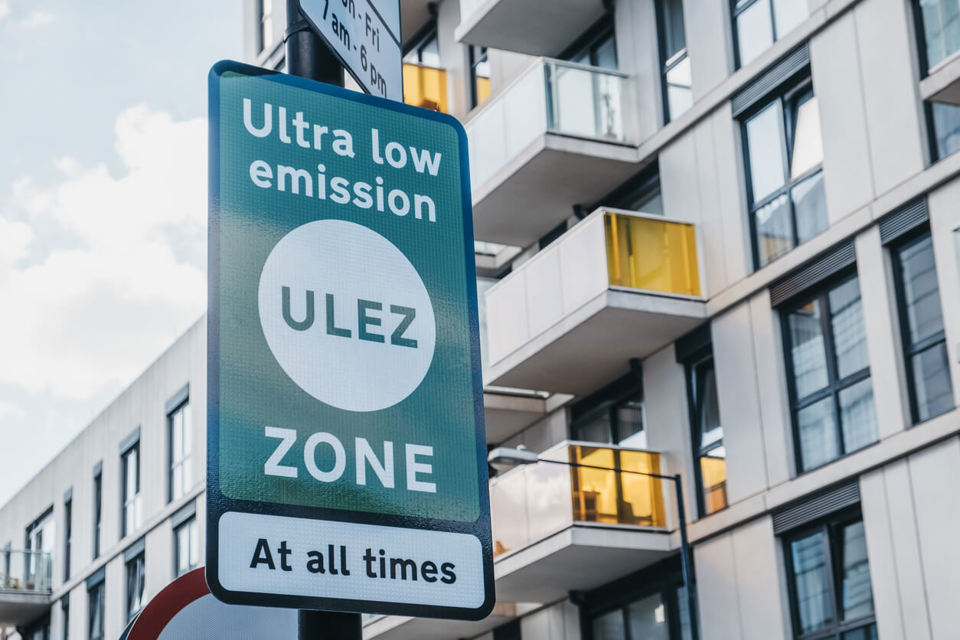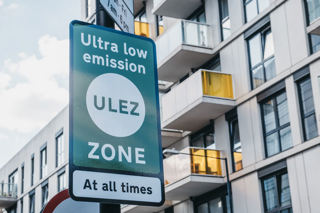Allow Independent Road-testing (AlR) welcomes the launch of the Ultra Low Emission Zone (ULEZ) in London on Monday (April 8), but has again claimed it will not stop ‘dirty diesels’ from entering the capital.
Under the ULEZ scheme, penalty-free access to the centre of London will only be granted to petrol cars with a minimum Euro 4 standard while diesels must comply with the Euro 6 standard. Non-compliant cars must pay £12.50 to enter the ULEZ on top of the Congestion Charge.
However, AIR says tests it has conducted, rated in the AIR Index, show that many Euro 6 diesels will legitimately still be producing many times the officially published NOx limit, with free access to ULEZ.
When a 2017 Renault Clio 1.5 litre dCi diesel was tested and rated in the AIR Index, it emerged that the supermini emitted 20 times more NOx in urban driving than a 2018 Land Rover Discovery 3.0 litre TD6 diesel, yet both fall under the category of ‘Euro 6’. What’s more, some Euro 6 diesels produce more urban NOx than earlier, cleaner Euro 5 vehicles, says AIR.
The results of variations between Euro 6 vehicles was presented at the launch of the AIR Index in February 2019.
AIR Index co-founder Nick Molden said: “Whilst the latest phase of the Euro 6 standard – in this case 6d which includes on-road testing - does set low levels of urban NOx emissions, millions of cars with a pre-Euro 6d standard have been sold across Europe and some are still on sale today. All these have unlimited ULEZ access since they fall within the overall Euro 6 stage.
“The fundamental issue we have with ULEZ access being based upon Euro standards alone, is that is not an efficient or fair way to address the problem of urban NOx emissions from vehicles, since over-emitting newer Euro 6 cars will be allowed in, yet older lower-emitting Euro 5 cars will attract penalty fines.”
The AIR Index rates vehicles tested in urban conditions to the same standardised methodology providing comparable NOx emissions levels that more accurately reflect the contribution to urban air quality than existing tests performed in a laboratory.
AIR says it has been created to “inform and empower” car buyers and policy-makers about vehicle emissions when making choices about car purchase and usage.
An A-E colour-coded rating, shows the difference between clean and dirty vehicles based on how much NOx comes out of a car’s tailpipe in urban driving.
“We believe that ULEZ should be based on a better source of data,” continued Massimo Fedeli, operations director and co-founder of the AIR Index.
“Without a better source, the positive benefits will be seen more slowly, and the number of car-owners affected will be greater than necessary.
“It would immediately be more effective if used in conjunction with the ratings provided through the AIR Index. This would enable access to only the cleanest vehicles and limit the over-emitting vehicles from adding further to poor urban air quality.
“Specifically, a C-rated Euro 5 diesel could be let in, but an E-rated Euro 6 should not be.”
At the launch of London’s ULEZ, AIR is calling on policy-makers across Europe to look at the most effective way to use actual vehicle emissions, not just laboratory standards, as the basis for policies which will bring cleaner air, more quickly to everyone.
“Even at the most optimistic predictions, the current rate of adoption of zero emission vehicles is not happening quickly enough to help us, our friends and families, colleagues and citizens who need immediate respite from urban air pollution,” said Fedeli.
“To make rapid progress, we need to make best use of the cleanest internal combustion engine technology available today and deliver a real improvement in air quality immediately. There can be no excuse for failing to use the most effective ways available to us now, to improve urban air quality for everyone.”
Further information about Allow Independent Road-testing (AIR) can be found at www.allowair.org.























Peter - 05/04/2019 11:46
While the AIR index may indeed highlight the inconsistencies within Euro 5 and Euro 6 vehicle categories, it is a long way from being comprehensive enough to be the basis for a charging regime. I thought I would look up my vehicle, being a Xmas 2014 reg. however the only variant in the database is a Euro 3, 2005 model. In the absence of a viable alternative, how are cities supposed to draw the line?